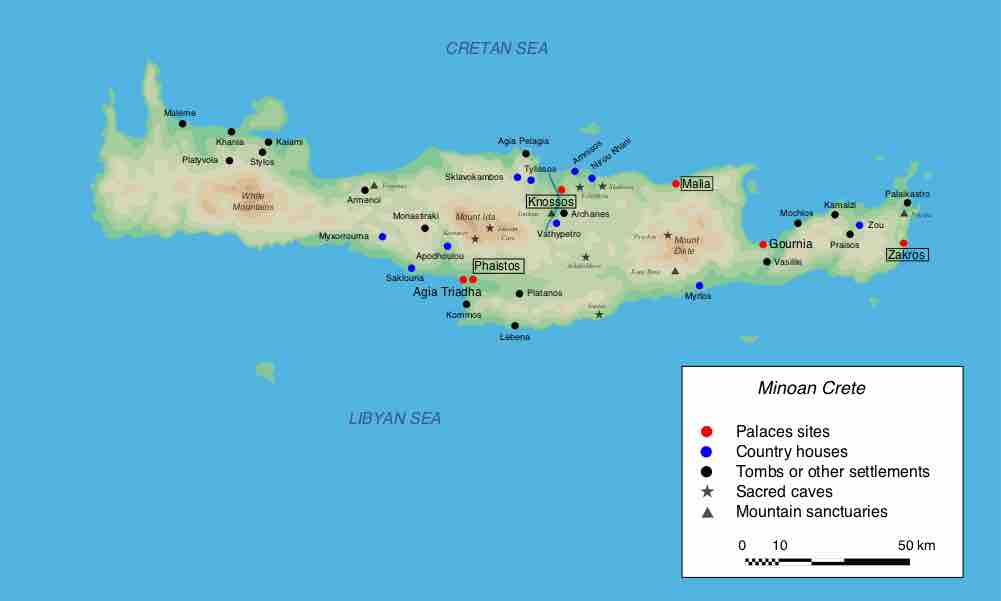Discovery and Excavation
The ancient sites on the island of Crete were first excavated in the early 1900s by British archaeologist Sir Arthur Evans. Evans excavated the site of Knossos, where he discovered a "palace." From this fact and related points, he decided to name the civilization after the mythical King Minos. The many rooms of the "palace" at Knossos were so oddly shaped and disordered to Evans that they reminded him of the labyrinth of the Minotaur. According to myth, Minos' wife had an illicit union with a white bull, which lead to the birth of a half bull and half man, known as the Minotaur. King Minos had his court artist and inventor, Daedalus, build an inescapable labyrinth for the Minotaur to live in.
Archaeological evidence dates the arrival of the earliest inhabitants of Crete in approximately 6000 BCE. Over the next four thousand years the inhabitants developed a civilization based on agriculture, trade, and production. The Minoans civilization on Crete existed on the island during the Bronze Age, from 3000 to 1100 BCE , although the Mycenaeans from Greece invaded the island in the mid 1400s BCE and occupied it for the last centuries before the Greek Dark Age. The Minoans were known as great seafarers. They traded extensively throughout the Mediterranean region.

Map of Minoan Crete
Map of Minoan Crete
Protopalatial Period
The Protopalatial Period is considered the civilization's second phase of development, lasting from 1900 to 1700 BCE. During this time major sites on the island were developed, including the palatial sites of Knossos, Phaistos, and Kato Zakros, which were the first "palaces" or administrative centers built on Crete. These civic centers appear to denote the emergence of a collective community governing system, instead of system in which a king ruled over each town. During this period the Minoan trade network expanded into Egypt and the Near East; the first signs of writing, the still undeciphered language Linear A, appear. The period ended with a cataclysmic event, perhaps an earthquake or an invasion, which destroyed the palace centers.
Neopalatial Period
The Neopalatial period occurred from 1700 to 1450 BCE, during which time the Minoans saw the height of their civilization. Following the destruction of the first palaces in approximately 1700 BCE, the Minoans rebuilt these centers into the palaces which were first excavated by Sir Arthur Evans. During this period, Minoan trade increased; during this period the Minoans were considered to rule the Mediterranean trading routes between Greece, Egypt, Anatolia, the Near East, and perhaps even Spain. Minoans began to settle in colonies away from Crete, including on the islands of the Cyclades, Rhodes, and in Egypt.